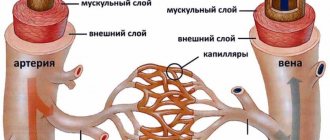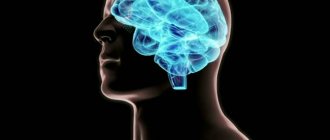Demyelinating disease is a pathological process of destruction of the myelin sheath that affects neurons in the brain and spinal cord. At the same time, the conductivity of impulses in the nervous system deteriorates. The disease is characterized by the destruction of brain myelin. This dangerous condition affects the functioning of the entire body. The disease occurs with equal frequency in both adults and children. Modern medicine does not have the means to completely cure this disease. It can only be weakened and the flow slowed down.
Demyelination
Demyelinating brain disease according to ICD-10 has codes G35, G36 and G77. The process caused by damage to the nervous tissue negatively affects the functioning of the entire organism as a whole. Certain nerve endings are covered with a myelin sheath, which performs important functions in the body. For example, myelin ensures the rapid transmission of electrical impulses and, accordingly, if this process is disrupted, the entire system suffers. Myelin consists of lipids and protein compounds in a 70/30 ratio.
Expert opinion
Author: Daria Olegovna Gromova
Neurologist
The most common demyelinating brain disease is multiple sclerosis. Its symptoms are very diverse, so the patient rarely immediately comes to a neurologist. Decreased vision, numbness of the limbs, problems with motor skills - different doctors give different recommendations, although it is enough to simply send the patient for an MRI and laboratory tests that will confirm fears or rule out brain diseases.
Demyelinating disease is not only multiple sclerosis, it is also neuromyelitis optica and acute disseminated encephalomyelitis. These diseases have no cure, but their progression can be slowed down. In general, doctors give a favorable prognosis when treating these pathologies. The diagnosis of “multiple sclerosis” is now made more often, but the disease itself is milder than 30-40 years ago.
Thanks to modern methods of therapy and research, a benign course is observed in approximately half of the cases - patients fully retain their ability to work, start families, and give birth to children. There are some restrictions, for example, visiting baths and saunas, prolonged exposure to the sun is prohibited, but otherwise the lifestyle remains the same, no special diets are needed.
Development mechanisms
The nervous system consists of central and peripheral sections. The regulation mechanism between them works as follows: impulses from the receptors of the peripheral system are transmitted to the nerve centers of the spinal cord, and from there to the brain. The disruption of this complex mechanism causes demyelination.
Nerve fibers are covered with a myelin sheath. As a result of the pathological process under consideration, this membrane is destroyed and fibrous tissue is formed in its place. She, in turn, cannot conduct nerve impulses. In the absence of nerve impulses, the functioning of all organs is disrupted, since the brain cannot issue commands.
1) Multiple sclerosis (MS)
This is the most common pathology among demyelinating diseases of the central nervous system; Around the world, approximately 2.1 million people have multiple sclerosis. The incidence of multiple sclerosis ranges from 2 to 150 patients per 10,000 people, depending on the region.
Etiopathogenesis
It is believed that MS is an autoimmune disease that affects people with a genetic predisposition under the influence of external factors. The damage occurs when the body's immune system attacks the structures of its own nervous system. Typically, lesions are localized in the white matter of the brain, periventricularly, in the brainstem, basal ganglia and spinal cord, and often affect the optic nerves.
In MS, oligodendrocytes, the cells that form myelin, are affected. Parallel to the demyelinating process, an inflammatory reaction occurs, in which T lymphocytes participate, crossing the blood-brain barrier. T lymphocytes attack myelin - this is a trigger that starts an inflammatory reaction, which includes many cytokines and antibodies. It has been proven that, in parallel with T lymphocytes, B lymphocytes participate in the pathological reaction.
Diagnostics
Diagnosis of the disease is relatively difficult due to the fact that the symptoms are similar to other diseases. Diagnostic criteria (McDonald criteria) were developed and revised in 2010. The criteria are based on clinical presentation, laboratory and radiological data.
Radiological criteria for the disease are based on the spread of the process in space and dynamics, therefore, it is not always possible to establish a diagnosis at one point, sometimes it is even necessary to perform repeated MRIs. In the cerebrospinal fluid punctate, oligoclonal antibodies (IgG) can be detected, which indicate a chronic inflammatory process. Oligoclonal antibodies are found in the blood of 85% of patients with MS.
Clinical picture
Symptoms in MS depend on the location of lesions in the central nervous system. Classic symptoms include internuclear ophthalmoplegia, Lhermitte's symptom, conduction-type sensory disturbances, pyramidal symptoms, neurogenic bladder, optic neuritis. The onset of symptoms is unpredictable and generally ranges from 24 hours or more. Typically, symptoms reduce slowly, and remissions may not be complete. Any infection can provoke pseudo-relapse.
There is a clinical classification of the course of multiple sclerosis. Based on it, treatment is prescribed.
RS is divided into:
- relapsing-remitting course - exacerbations with complete/partial remission, between exacerbations a stable course (50% within 10 years turn into a secondary progressive form);
- Secondarily progressive course - initially a relapsing remitting course, followed by a steadily progressive worsening of symptoms, with or without exacerbations;
- Primary progressive course – up to 15% of patients, without remissions, starting from the first symptom;
Treatment
MS is not a curable disease.
A distinction is made between treatment of acute episodes, immunomodulatory therapy, symptomatic treatment and rehabilitation.
Treatment is aimed at reducing inflammatory and demyelinating processes, delaying the next relapse and slowing the progression of disability.
To treat exacerbations, use methylprednisolone 1000 mg / 3-5 day course, depending on the severity of the exacerbation. In some cases, when methylprednisolone does not provide a therapeutic effect, plasmapheresis is used.
For the purpose of immunomodulatory therapy, medications are used that reduce the frequency of relapses in the case of relapsing-remitting disease. This group of medications includes: Interferon beta 1a (Avonex, Rebif); Interferon beta 1b (Betaferon, Extavia); glatiramer acetate (Copaxone); For immunosuppressive therapy, the following are used: Natalizumab (Tysabri); Mitoxantrone.
There are certain criteria, according to which, by decision of the council, the patient can receive drug treatment paid for by the state.
Like all other medications, these medications have their own side effects, which may cause the patient to refuse to take them.
Treatment of MS is a team effort, in which a neurologist, neuroradiologist, neuro-ophthalmologist and rehabilitation specialist should participate.
a
Causes
Demyelinating diseases of the brain are characterized by damage to the peripheral and central nervous systems. They most often occur against the background of a genetic predisposition. It also happens that a combination of certain genes provokes disturbances in the functioning of the immune system. There are other causes of demyelinating diseases:
- state of chronic or acute intoxication;
- solar radiation;
- ionizing radiation;
- autoimmune processes in the body and genetic pathologies;
- complication of bacterial and viral infection;
- poor nutrition.
The Caucasian race is considered to be the most susceptible to this pathology, especially those representatives who live in northern latitudes. This type of disease can be provoked by a head or spinal injury, depression, or bad habits. Some types of vaccines can also trigger the development of such pathologies. This applies to vaccinations against measles, smallpox, diphtheria, influenza, whooping cough, and hepatitis B.
Classification
Demyelinating disease of the nervous system is classified into different types, which are based on the destruction of the myelin sheath. In this regard, the pathology under consideration is divided accordingly into multiple sclerosis, Marburg disease, Devic disease, progressive multifocal leukoencephalopathy and Guillain-Barré syndrome.
Multiple sclerosis
Multiple sclerosis is characterized as a severe chronic and immunodegenerative disease of the central nervous system, prone to progression. In most cases, the disease occurs at a young age and almost always leads to disability. This demyelinating disease of the central nervous system is assigned code G35 according to ICD-10.
Currently, the causes of the development of multiple sclerosis are not fully understood. Most scientists are inclined to the multifactorial theory of the development of this disease, when genetic predisposition and external factors are combined. The latter include:
- infectious diseases;
- state of chronic intoxication;
- taking certain medications;
- change of place of residence with a sharp change in climate;
- lack of fiber and high-calorie diet.
The relationship between the symptoms of multiple sclerosis and the stage of the disease is not always clear. The pathology can have a wave-like course. Exacerbations and remissions can be repeated at varying intervals. A feature of multiple sclerosis is that each new exacerbation has a more severe course compared to the previous one.
The progression of multiple sclerosis is characterized by the development of the following symptoms:
- sensory disturbances (goosebumps, numbness, tingling, burning, itching);
- visual impairment (impaired color rendering, decreased visual acuity, blurred picture);
- trembling of the limbs or torso;
- headache;
- speech disorders and difficulty swallowing;
- muscle spasms;
- gait changes;
- cognitive impairment;
- heat intolerance;
- dizziness;
- chronic fatigue;
- libido disturbance;
- anxiety and depression;
- stool instability;
- insomnia;
- autonomic disorders.
There are also secondary symptoms of multiple sclerosis. They imply complications of the disease. Foci of demyelination in the brain are determined using magnetic resonance imaging, including the introduction of a contrast agent.
Treatment of multiple sclerosis is carried out using methods such as:
- plasmapheresis;
- taking cytostatics;
- prescription of immunosuppressants;
- use of immunomodulators;
- taking beta interferons;
- hormonal therapy.
- symptomatic therapy with the prescription of antioxidants, nootropic drugs and vitamins.
During the period of remission, patients are prescribed sanatorium treatment, massage, and physical therapy. In this case, all thermal procedures should be excluded. To alleviate the symptoms of the disease, medications are prescribed: those that reduce muscle tone, eliminate tremors, normalize urination, stabilize the emotional background, and anticonvulsants.
Multiple sclerosis is classified as an incurable disease. Therefore, these treatment methods are aimed at reducing symptoms and improving the patient’s quality of life. The life expectancy of patients with this disease depends on the nature of the pathology.
Types of lesions on MRI of the head
The color of the resulting image of normal brain structures and pathological changes depends on the program used. When scanning in angio mode, including using contrast, a branched network of arteries and veins appears on the images. Focal changes are of several types; based on their characteristics, the doctor can guess the nature of the foci.
With pathology of the medulla, the properties of the affected foci are disrupted, which is manifested by a sharp change in the MR signal compared to healthy areas. The use of certain sequences (diffusion-weighted, FLAIR, etc.) or contrast allows for more clear visualization of local changes. That is, if a radiologist sees a single lesion on the MRI results, different scanning modes or contrast will be used to study it in more detail.
When comparing changes with healthy areas of the brain, hyper-, hypo- and isointense zones are identified (bright, dark, and the same color as adjacent structures, respectively).
Brain abscess on MRI (indicated by arrow)
Hyperintense lesions
Identification of hyperintense, i.e. foci that clearly stand out on MR scans makes the specialist suspect a brain tumor, including of metastatic origin, hematoma (at a certain moment from the onset of hemorrhage), ischemia, edema, vascular pathologies (cavernomas, arteriovenous malformations, etc.), abscesses , metabolic disorders, etc.
Brain tumor on MRI (indicated by arrow)
Subcortical lesions
Damage to the white matter of the brain is usually characterized as changes in subcortical structures. Subcortical lesions identified by MRI indicate that the damage is localized just under the cortex. If multiple juxtacortical lesions are detected, it makes sense to suspect a demyelinating process (eg, multiple sclerosis). With this pathology, destructive changes occur in various areas of the white matter, including directly under the cerebral cortex. Periventricular and lacunar lesions are usually detected during ischemic processes.
Foci of gliosis
When brain tissue is damaged, compensatory mechanisms are activated. Destroyed cells are replaced by glial structures. The latter ensures the transmission of nerve impulses and is involved in metabolic processes. Due to the structures described, the brain recovers from injuries.
Identification of glial foci indicates previous destruction of the cerebral substance due to:
- birth trauma;
- hypoxic processes;
- hereditary pathologies;
- hypertension;
- epilepsy;
- encephalitis;
- intoxication of the body;
- sclerotic changes, etc.
By the number and size of altered areas, one can judge the extent of brain damage. Dynamic observation allows you to assess the rate of progression of the pathology. However, by studying the zones of gliosis, it is impossible to accurately determine the cause of the destruction of nerve cells.
Foci of demyelination
Some diseases of the nervous system are accompanied by damage to the glial membrane of the long processes of neurons. As a result of pathological changes, the conduction of impulses is disrupted. This condition is accompanied by neurological symptoms of varying degrees of intensity. Demyelination of nerve fibers can be caused by:
- multifocal leukoencephalopathy;
- multiple sclerosis;
- dissimulating encephalomyelitis;
- Marburg's disease, Devic's disease and many others.
Typically, demyelination lesions appear as multiple small areas of hyperintense MR signal located in one or more parts of the brain. Based on the degree of their prevalence, duration and simultaneity of occurrence, the doctor judges the scale of development of the disease.
Focus of demyelination on MRI
Focus of vascular origin
Cerebrovascular insufficiency causes ischemia of the cerebral substance, which leads to changes in the structure and loss of function of the latter. Early diagnosis of vascular pathologies can prevent stroke. Focal changes of discirculatory origin are found in most patients over 50 years of age. Subsequently, such zones can cause degenerative processes in the brain tissue.
Lacunar cerebral infarction on MRI (indicated by arrow)
Cerebral circulation disorders can be suspected by focal changes in the perivascular Virchow-Robin spaces. The latter are small cavities around the cerebral vessels, filled with fluid, through which tissue trophism and immunoregulatory processes occur (blood-brain barrier). The appearance of a hyperintense MR signal indicates expansion of the perivascular spaces, since they are normally not visible.
Sometimes an MRI of the brain reveals multiple lesions in the frontal lobe or in the deep parts of the hemispheres, which may indicate damage to the cerebral vessels. The situation is often clarified by MR scanning in angio mode.
Foci of ischemia on MRI
Foci of ischemia
Cerebral circulation disorders lead to oxygen starvation of tissues, which can provoke necrosis (infarction). Ischemic lesions on T2-weighted sequences appear as areas with moderately hyperintense signal of irregular shape. At a later stage, when performing MRI in T2 VI or FLAIR mode, a single lesion takes on the appearance of a light spot, which indicates a worsening of destructive processes.
Marburg disease
Hemorrhagic fever or Marburg disease is an acute infectious pathology caused by the Marburg virus. It enters the body through damaged skin and mucous membranes of the eyes and mouth.
Infection occurs through airborne droplets and sexual contact. In addition, you can become infected through the blood and other secretions of the patient. After a person recovers from this disease, he develops a stable and long-lasting immunity. Re-infection was not encountered in practice. A person who has recovered from Marburg hemorrhagic fever experiences the formation of necrosis and foci of hemorrhage in the liver, myocardium, lungs, adrenal glands, kidneys, spleen and other organs.
The symptoms of the disease depend on the stage of the pathological process. The incubation period lasts from 2 to 16 days. The disease has an acute onset and is characterized by an increase in body temperature to high levels. Along with fever, chills may appear. Signs of intoxication increase, such as weakness, headache, pain in muscles and joints, intoxication and dehydration. 2-3 days after this, gastrointestinal dysfunction and hemorrhagic syndrome appear. A stabbing pain appears in the chest area, which intensifies during breathing. In addition, the patient may develop a dry cough and substernal stabbing pain. The pain may spread to the throat area. The mucous membrane of the pharynx becomes very red. Almost all patients experienced diarrhea, which lasted almost 7 days. A characteristic sign of this disease is the appearance of a measles-like rash on the body.
All symptoms intensify by the end of the first week. Bleeding from the nose, gastrointestinal tract, and genital tract may also be observed. By the beginning of week 2, all signs of intoxication reach their maximum. In this case, convulsions and loss of consciousness are possible. According to the blood test, specific changes occur: thrombocytopenia, poikilocytosis, anisocytosis, granularity of erythrocytes.
If a person is suspected of having Marburg disease, he is urgently hospitalized in the infectious diseases department and must be kept in an isolated box. The recovery period may take up to 21-28 days.
Devic's disease
Neuromyelitis optica or Devic's disease has a chronic pattern similar to multiple sclerosis. This is an autoimmune disease, the causes of which are still unclear. One of the reasons for its development is an increase in the permeability of the barrier between the meninges and the vessel.
Some autoimmune diseases can trigger the progression of Devic's disease:
- rheumatoid arthritis;
- systemic lupus erythematosus;
- Sjögren's syndrome;
- dermatomyositis;
- thrombocytopenic purpura.
The disease has specific symptoms. Clinical manifestations are caused by disruption of conductive impulses. In addition, the optic nerve and spinal cord tissue are affected. In most cases, the disease manifests itself as visual impairment:
- a veil before the eyes;
- pain in the eye sockets;
- blurred vision.
As the disease progresses and there is no adequate treatment, the patient runs the risk of completely losing his vision. In some cases, regression of symptoms with partial restoration of eye function is possible. Sometimes it happens that myelitis precedes neuritis.
Neuromyelitis optica has two course options: a progressive increase in symptoms with simultaneous damage to the central nervous system. In rare cases, a monophasic course of the disease occurs. It is characterized by steady progress and worsening symptoms. In this case, the risk of death is increased. With the right treatment, the pathological process slows down, but complete recovery is not guaranteed.
The second option, the most common, is characterized by an alternating change of remission and exacerbation and is designated by the concept of “recurrent course.” It is also accompanied by visual disturbances and spinal cord dysfunction. During the period of remission, a person feels healthy.
To identify Devic's disease, a set of measures is carried out. In addition to standard diagnostic procedures, lumbar puncture with cerebrospinal fluid analysis, ophthalmoscopy and MRI of the spine and brain are performed.
Treatment of Devic's disease is long and difficult. The main goal is to slow the progression of the disease and improve the patient’s quality of life. As part of drug therapy, glucocorticosteroids, muscle relaxants, antidepressants, and centrally acting painkillers are used. In severe cases of the disease, the patient may face complications such as paralysis of the legs, blindness, or persistent dysfunction of the pelvic organs. With timely and correct treatment, a complete recovery is guaranteed.
2) Devic neuromyelitis optica
Devic's neuromyelitis optica (NMO) is usually expressed clinically as a monophasic inflammatory demyelination of the central nervous system, which mainly affects the optic nerves (ON optic neuritis) and the spinal cord (LETM longitudinally extensive transverse myelitis). The disease is more common among Asians and women.
Pathogenesis
Aquaporin 4 (AQP4) is a transmembrane protein that regulates the influx and outflow of water from cells of the central nervous system. AQP4 is expressed in the brain and spinal cord, optic nerves on astrocyte membranes. The highest density of AQP4 was found in the hypothalamus, periventricularly near the 3rd and 4th ventricles of the brain, hippocampus and cerebellum.
There are regions in the CNS where the interaction between astrocytes and endothelium is less dense and the permeability of the blood-brain barrier (BBB) is higher. The optic disc is precisely a region with high permeability of the BBB, which has been proven using immunohistochemical staining. There are observations that ON and LETM can develop simultaneously, but more often LETM joins during dissemination of the disease, and in the early stages, patients have an ON clinic. Dissemination with the development of LETM usually occurs several weeks or months after the onset of the disease.
Diagnostic criteria
Optic neuritis and myelitis + 2 of 3:
- AQP4+Av
- LEMT (from or greater than 3 vertebrae in length)
- Brain changes on MRI that do not meet MS criteria
Neuromyelitis optica spectrum diseases (ONM):
- NMO limited forms – idiopathic recurrent longitudinal LEMT with a length of 3 or more vertebrae + AQP4 + Av;
- Asian opticospinal variant of MS;
- ON or LEMT associated with a systemic autoimmune disease;
- ON or LEMT associated with brain damage characteristic of NMO (localized in the hypothalamus, periventricular, brainstem);
Diagnostics
Diagnosis of NMO requires an MRI, consultation with a neuro-ophthalmologist, and laboratory tests.
In the early stages, MRI examination reveals no changes or nonspecific white matter lesions may be observed that do not meet the criteria for MS. Damage is usually observed in areas of the brain with high AQP4 expression - in the hypothalamus, near the 3rd or 4th ventricle of the brain. An exception is damage to the white matter in the brainstem area, which can be isolated or as a spread of myelitis from the cervical spinal cord. Damage to the spinal cord can range from 3 or more segments of the cervical vertebrae.
Optic nerve atrophy is diagnosed ophthalmoscopically.
Laboratory diagnostic data: AQP4 in serum (70-75% sensitivity, 85-99% specificity). The meaning of antibody titers has not yet been clarified; research is underway. Cerebrospinal fluid tests reveal pleocytosis, and 30% may have positive oligoclonal antibodies.
Treatment
I Acute period
1) Steroids (first episode or relapse)
- Methylprednisolone 1g i/v 3-5 days, then p/o, gradually reducing the dose
- Before starting a plasma exchange procedure, a repeat course of high-dose steroids should be considered if relapses occur.
2) Plasmapheresis – if steroid therapy is not effective
- In total, 7 sessions, every second day as in MS, there have been no studies of this therapeutic regimen for NMO.
3) Intravenous immunoglobulin (IVIG)
- There are no studies examining the use of IVIG for the treatment of ON/LETM relapses in NMO or NMO spectrum diseases.
II Prevention of relapse
First line drugs:
- Azathioprine 2.5-3 mg/kg/day po + Prednisolone 1 mg/kg/day po, reducing the dose after achieving a therapeutic effect from Azathioprine (after 2-3 months of use);
- Rituximab
a) i/v 375 mg/m2 every week for a month (Protocol for the treatment of lymphoma) b) 1000 mg i/v 2x with a 2-week interval between infusions (Protocol for the treatment of rheumatoid arthritis).
c) A and B: reinfusion after 6-12 months; the optimal duration of therapy is unknown; Second line drugs:
- Cyclophosphamide i.d. 7-25 mg/kg once a month, six months; especially if NMO is associated with SLE/SS;
- Mitoxantrone IV 12 mg/m2 once a month, six months, then 12 mg/m2 every 3 months, 9 months;
- Mycophenolate Mofeitil po 1-3 g every day;
- IVIG, Methotrexate;
- Intermittent plasmapheresis.
Progressive multifocal leukoencephalopathy
People with immune deficiency may experience progressive multifocal multifocal leukoencephalopathy. This is an infectious disease caused by the penetration of the JC virus, which belongs to the Polyomavirus family, into the body. A feature of the pathology is that asymmetric and multifocal brain damage occurs. The virus affects the membranes of nerve endings, which are made of myelin. Therefore, this disease belongs to the group of demyelinating pathologies.
Almost 85% of patients with this diagnosis are AIDS or HIV infected. The risk group includes patients with malignant tumors.
Main symptoms of the disease:
- mood swings;
- visual disturbances;
- paresthesia and paralysis;
- memory impairment.
Guillain-Barre syndrome
An acute inflammatory disease characterized by “demyelinating polyradiculoneuropathy.” It is based on autoimmune processes. The disease manifests itself as sensory disturbances, muscle weakness and pain. It is characterized by hypotension and disorder of tendon reflexes. Respiratory failure may also occur.
All patients with this diagnosis should be admitted to the intensive care unit. Since there is a risk of developing respiratory failure and a ventilator may be required, the department must have intensive care. Patients also need proper care with the prevention of bedsores and thromboembolism. It is also necessary to stop the autoimmune process. For this purpose, plasmapheresis and pulse therapy with immunoglobulins are used. Full recovery of patients with this diagnosis should be expected within 6-12 months. Deaths occur due to pneumonia, respiratory failure and pulmonary embolism.
Symptoms
Demyelination always manifests itself as a neurological deficit. This sign indicates the beginning of the process of myelin destruction. The immune system is also involved. Brain tissue - spinal and brain - atrophies, and expansion of the ventricles is observed.
Manifestations of demyelination depend on the type of disease, causative factors and location of the lesion. Symptoms may be absent when the damage to the brain substance is minor, up to 20%. This is due to a compensatory function: healthy brain tissue performs the tasks of the affected areas. Neurological symptoms rarely appear - only when more than 50% of the nervous tissue is damaged.
The following are common signs of demyelinating brain diseases:
- paralysis;
- limited muscle mobility;
- tonic spasms of the limbs;
- dysfunction of the intestines and bladder;
- pseudobulbar syndrome (impaired pronunciation of sounds, difficulty swallowing, change in voice);
- impaired fine motor skills of the hands;
- skin numbness and tingling;
- visual dysfunction (decreased visual acuity, blurred images, fluctuations in the eyeballs, color distortions).
Neuropsychological disorders characteristic of the pathology in question are caused by memory deterioration and a decrease in mental activity, as well as changes in behavior and personal qualities. This is manifested by the development of neuroses, depression, dementia of organic origin, emotional swings, severe weakness and decreased performance.
What do white and black spots mean on MRI images?
Zones of altered MR signal may indicate:
- tissue ischemia;
- edema;
- necrosis;
- purulent melting;
- tumor transformation;
- metastatic lesion;
- gliosis;
- demyelination;
- degeneration, etc.
The radiologist describes the signal intensity, size and location of the lesion. Taking into account the information received, the patient’s complaints and data from previous examinations, the specialist can assume the nature of the pathological changes.
Acute disseminated encephalomyelitis on MRI
Diagnostics
An early stage of the pathology with the absence of characteristic symptoms is accidentally discovered during a diagnostic examination for another reason. To confirm the diagnosis, neuroimaging is performed, and the neurologist determines the degree of impairment of the conductive function of the brain. The main diagnostic method is magnetic resonance imaging. In the photographs you can clearly see areas of the affected tissue. If you do angiography, you can determine the extent of vascular damage.
Lesions on MRI of the brain: what does it mean?
The result of magnetic resonance imaging is a series of layer-by-layer images of the area under study. In the images, healthy tissue appears as alternating light and dark areas, depending on the concentration of fluid in it and the pulse sequence used. Based on the sections, the radiologist evaluates:
- development and position of individual structures;
- compliance of the MR signal intensity with the norm;
- condition of the gyri and grooves;
- size and structure of the ventricular system and subarachnoid space;
- parameters of the ear canals, orbits, accessory sinuses;
- structure of the vascular bed;
- structure of cranial nerves and cerebral membranes;
- the presence of signs of pathology (focal changes, swelling, inflammation, damage to the walls of arteries and veins).
Lipoma of the quadrigeminal cistern on MRI (circled)
MRI is prescribed if the patient has neurological abnormalities due to damage to brain tissue. Symptoms may include:
- headache;
- impaired coordination of movements;
- dysfunction of the organs of hearing or vision;
- disturbances in concentration;
- memory disorders;
- sleep problems;
- psychoemotional disorders;
- paresis/paralysis of the limbs and/or facial muscles;
- sensory disorders;
- seizures, etc.
Magnetic resonance imaging of the head allows the doctor to accurately determine the location of focal changes and find out the nature of the patient’s poor health. At the Magnit DC, specialists are armed with the latest MR scanning devices, which allow them to conduct research with high reliability.









